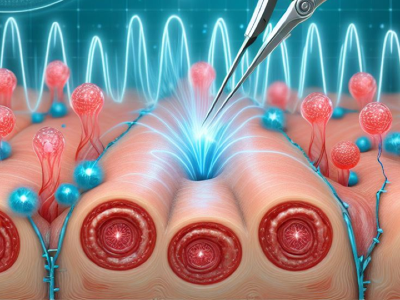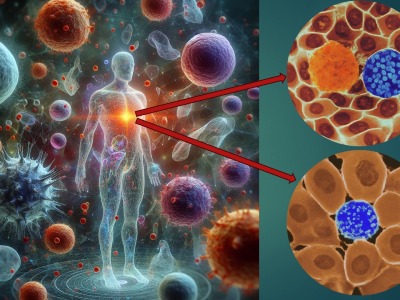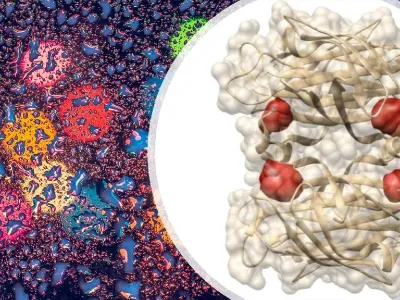PEMFs in Regenerative Medicine: The Future of Tissue Repair?

Our bodies have a remarkable ability to heal themselves. But sometimes, that ability needs a little boost. Pulsed electromagnetic fields (PEMFs) are emerging as a potential non-invasive therapy for tissue repair and regeneration. Pulsed electromagnetic fields (PEMFs) are short bursts of energy similar to radio waves but at a lower frequency. They hold promise for supporting the body's natural healing. PEMFs might interact with cells, influence wound healing by boosting nitric oxide production, and potentially manage inflammation. Research suggests they could benefit stem cell therapy, accelerate wound closure, and promote bone repair in musculoskeletal disorders. However, optimal settings for PEMF therapy are still being determined, and more research is needed to solidify its effectiveness and fully understand how it works on a cellular level.
How it Works (or Might Work)
The exact mechanisms by which PEMFs influence tissue repair are still under investigation, but several theories offer intriguing possibilities. PEMFs might interact with the very structure of cells, influencing the way they communicate with each other. These cellular conversations, mediated by signaling pathways, are critical in directing cell behavior, such as proliferation (cell division) and differentiation (specialization into different cell types). PEMFs might also influence the production of nitric oxide, a molecule that plays a crucial role in wound healing and blood flow. By boosting nitric oxide production, PEMFs could potentially accelerate the healing process. Additionally, PEMFs might help regulate the inflammatory response. Inflammation is a natural part of healing, but excessive inflammation can hinder repair. PEMFs might tip the scales in favor of healing by promoting a more balanced inflammatory response.
Early Signs of Promise
PEMFs show promise in supporting the body's healing mechanisms in several ways. In stem cell therapy, research suggests that PEMFs can stimulate stem cells to proliferate, or multiply, more readily. This can be beneficial because stem cells can potentially develop into various types of specialized cells, the building blocks of healthy tissues. Additionally, PEMFs may influence stem cells to differentiate along specific pathways, encouraging them to become the particular cell types needed for repair. This targeted differentiation could be instrumental in promoting tissue regeneration. Wound healing is another area where PEMFs might offer therapeutic advantages. Studies suggest that PEMFs can accelerate wound closure by stimulating the migration of fibroblasts, the cells responsible for laying down new connective tissue, and by promoting the formation of blood vessels, which deliver oxygen and nutrients essential for healing. PEMFs might also improve the quality of healed tissue, reducing scar formation. Musculoskeletal disorders, encompassing conditions like bone fractures and tendon injuries, are another potential target for PEMF therapy. Research suggests that PEMFs can promote bone cell activity, leading to faster bone healing and repair. In the case of tendon injuries, PEMFs might reduce inflammation and pain while also stimulating the production of collagen, a key protein that provides structural support to tendons.
Challenges and the Road Ahead
While PEMFs hold exciting potential for promoting tissue repair and regeneration, several challenges must be addressed to optimize their use in clinical settings. One crucial challenge is identifying the optimal parameters for PEMF therapy. These parameters include the intensity, or strength, of the electromagnetic field, the frequency or the number of pulses delivered per second, and the duration of exposure. Finding the right combination of these parameters is essential for maximizing the therapeutic benefits of PEMFs. For instance, excessively high intensity might damage tissues, while excessively low intensity might not be strong enough to elicit a cellular response. Similarly, the frequency and duration of exposure need to be carefully calibrated to achieve the desired outcome. Different tissue types and conditions may also require different optimal parameters. More research is necessary to establish standardized protocols for PEMF therapy across various applications.
Another challenge is the occasional inconsistency in research findings. Some studies have reported significant improvements in tissue repair and regeneration with PEMF therapy, while others have shown more modest or no effects. These discrepancies might be due to variations in the PEMF parameters used, study design differences, or biological systems' inherent complexity. Further research with stricter standardization and robust methodologies is needed to solidify the evidence base for PEMF therapy.
Finally, a deeper understanding of the mechanisms by which PEMFs interact with cells and tissues is critical. While we have some theories, such as the influence on cell structure, signaling pathways, and nitric oxide production, a more comprehensive picture is needed. This understanding will be instrumental in refining PEMF therapy and developing targeted protocols for specific conditions. By unraveling the biological mechanisms at play, we can unlock the full potential of PEMFs for promoting tissue healing and regeneration.
The Takeaway
PEMFs represent a promising non-invasive approach to tissue repair and regeneration. However, more research is required to optimize their use and fully understand their mechanisms. If you're interested in exploring PEMF therapy, talk to your doctor to see if it's right.
Reference:
Su, D., Zhao, Z., Yin, D., & Ye, Y. (2024). Promising application of pulsed electromagnetic fields on tissue repair and regeneration. Progress in Biophysics and Molecular Biology, 187, 36-50. https://doi.org/10.1016/j.pbiomolbio.2024.01.003



